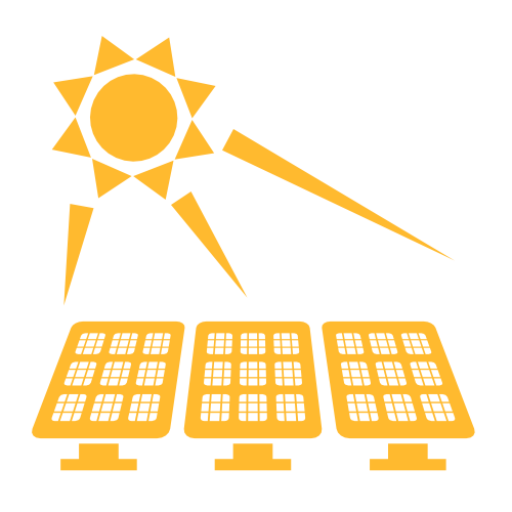Solar Power Water Districts are innovative systems that combine solar power technology with water management infrastructure. These districts are designed to provide clean and sustainable energy for water treatment and distribution facilities, reducing reliance on traditional energy sources and promoting environmental sustainability. In the current scenario, where climate change and resource depletion are major concerns, Solar Power Water Districts play a crucial role in ensuring the availability of clean water while minimizing the carbon footprint.
How Solar Power Water Districts Work
Solar Power Water Districts utilize solar panels to generate electricity from sunlight. These panels are installed on rooftops or in open areas where they can receive maximum sunlight exposure. The electricity generated is then used to power the water treatment and distribution facilities, including pumps, filtration systems, and disinfection units. Excess electricity can be stored in batteries for use during cloudy days or at night when there is no sunlight.
The components of Solar Power Water Districts include solar panels, inverters, batteries, and control systems. Solar panels capture sunlight and convert it into electricity through the photovoltaic effect. Inverters convert the direct current (DC) generated by the solar panels into alternating current (AC) that can be used to power the water facilities. Batteries store excess electricity for later use. Control systems monitor and regulate the flow of electricity, ensuring efficient operation of the system.
Benefits of Solar Power Water Districts for Taxpayers
One of the primary benefits of Solar Power Water Districts for taxpayers is a reduction in energy costs. By generating their own electricity from solar power, water districts can significantly reduce their reliance on traditional energy sources such as fossil fuels. This leads to lower energy bills for taxpayers as the cost of electricity is reduced.
In addition to lower energy costs, Solar Power Water Districts can also lead to lower water bills for taxpayers. By utilizing solar power for water treatment and distribution, the operational costs of these facilities are reduced. This cost savings can be passed on to the taxpayers in the form of lower water bills.
Furthermore, Solar Power Water Districts can contribute to increased property values in the community. The adoption of sustainable practices, such as solar power, is highly valued by homebuyers and investors. Properties located in areas with Solar Power Water Districts may attract higher prices due to their eco-friendly infrastructure and reduced utility costs.
Cost Savings of Solar Power Water Districts
Solar Power Water Districts offer significant cost savings in various aspects. Firstly, by generating their own electricity from solar power, water districts can reduce their energy costs. Traditional energy sources such as fossil fuels are subject to price fluctuations and increasing costs. By relying on solar power, water districts can stabilize their energy expenses and reduce their reliance on external energy providers.
Additionally, Solar Power Water Districts can lead to lower maintenance costs. Solar panels have a long lifespan and require minimal maintenance compared to traditional energy infrastructure. This reduces the need for frequent repairs and replacements, resulting in cost savings for water districts.
Moreover, Solar Power Water Districts offer long-term cost savings. While the initial installation costs may be higher compared to traditional energy systems, the long-term savings outweigh the upfront investment. Solar panels have a lifespan of 25-30 years and require minimal operating costs. Over time, the cost savings from reduced energy bills and maintenance expenses can offset the initial installation costs.
Environmental Benefits of Solar Power Water Districts
Solar Power Water Districts have numerous environmental benefits that contribute to a sustainable future. Firstly, these districts help reduce the carbon footprint by replacing traditional energy sources with clean and renewable solar power. By generating electricity from sunlight, Solar Power Water Districts eliminate greenhouse gas emissions associated with fossil fuel-based energy generation.
Furthermore, Solar Power Water Districts promote the conservation of natural resources. Traditional energy sources such as coal and natural gas are finite resources that contribute to resource depletion and environmental degradation. By utilizing solar power, water districts reduce their reliance on these limited resources and promote the conservation of natural resources for future generations.
Additionally, Solar Power Water Districts encourage sustainable practices in the community. By adopting solar power technology, water districts set an example for residents and businesses to follow. This promotes a culture of sustainability and encourages individuals to explore renewable energy options for their own energy needs.
Case Studies of Successful Solar Power Water Districts

Several successful Solar Power Water Districts have been implemented worldwide, showcasing the positive impact of these systems on the community. One such example is the Lancaster Choice Energy program in California, USA. This program offers residents the option to receive 100% renewable energy, including solar power, for their electricity needs. The program has been successful in reducing greenhouse gas emissions and promoting sustainable practices in the community.
Another example is the Solar Water Pumping Project in Rajasthan, India. This project aims to provide clean drinking water to remote villages using solar-powered water pumps. By replacing diesel-powered pumps with solar-powered ones, the project has reduced carbon emissions and improved access to clean water in rural areas.
These case studies highlight the potential of Solar Power Water Districts to transform communities and contribute to a sustainable future.
Challenges and Solutions for Implementing Solar Power Water Districts
Implementing Solar Power Water Districts can come with various challenges. One of the main challenges is the initial cost of installation. While solar power technology has become more affordable in recent years, the upfront investment required for installing solar panels and other components can be a barrier for some water districts. However, there are various financing options available, such as grants and loans, that can help overcome this challenge.
Another challenge is the intermittent nature of sunlight. Solar panels require direct sunlight to generate electricity efficiently. Cloudy days or periods of low sunlight can affect the performance of solar power systems. However, advancements in battery storage technology have made it possible to store excess electricity generated during sunny days for use during cloudy periods. This helps overcome the challenge of intermittent sunlight and ensures a continuous supply of electricity.
Furthermore, there may be regulatory and policy barriers that hinder the implementation of Solar Power Water Districts. These barriers can include outdated regulations, lack of incentives, and bureaucratic processes. To overcome these challenges, it is important for governments and policymakers to create a supportive environment for the adoption of solar power technology through favorable policies, incentives, and streamlined processes.
Future Outlook for Solar Power Water Districts
The future outlook for Solar Power Water Districts is promising. As the demand for clean and sustainable energy continues to grow, more water districts are likely to adopt solar power technology. The falling costs of solar panels and advancements in battery storage technology make solar power an increasingly viable option for water treatment and distribution facilities.
Moreover, technological advancements in Solar Power Water Districts are expected to further enhance their efficiency and effectiveness. Researchers are exploring new materials and designs for solar panels that can improve their performance and reduce costs. Additionally, advancements in battery storage technology are expected to increase the capacity and lifespan of batteries, making them more reliable for storing excess electricity.
How Solar Power Water Districts Can Improve Water Management
Solar Power Water Districts have the potential to improve water management in various ways. Firstly, these districts promote efficient use of water resources. By utilizing solar power for water treatment and distribution, water districts can optimize their operations and minimize water wastage. This includes implementing smart technologies that monitor water flow, detect leaks, and regulate water pressure to ensure efficient use of water resources.
Additionally, Solar Power Water Districts can contribute to a reduction in water wastage through improved infrastructure. By investing in modern and efficient water treatment and distribution facilities powered by solar energy, water districts can minimize losses due to leaks, evaporation, and inefficient systems. This leads to a more sustainable and responsible use of water resources.
Furthermore, Solar Power Water Districts can improve water quality. Solar-powered filtration and disinfection systems can effectively remove contaminants and pathogens from water, ensuring that the water supplied to the community is safe and clean. This promotes public health and reduces the risk of waterborne diseases.
Solar Power Water Districts as a Sustainable Solution for Taxpayers
In conclusion, Solar Power Water Districts offer numerous benefits for taxpayers and the environment. These districts reduce energy costs, lower water bills, and increase property values for taxpayers. They also provide significant cost savings through reduced energy expenses and maintenance costs. From an environmental perspective, Solar Power Water Districts help reduce the carbon footprint, conserve natural resources, and promote sustainable practices.
While there may be challenges in implementing Solar Power Water Districts, such as upfront costs and regulatory barriers, these challenges can be overcome through financing options and supportive policies. The future outlook for Solar Power Water Districts is promising, with advancements in technology expected to further enhance their efficiency and effectiveness.
Overall, Solar Power Water Districts are a sustainable solution that can improve water management, promote environmental sustainability, and benefit taxpayers. It is important for communities and governments to recognize the importance of adopting solar power technology and take action to promote its widespread adoption. By embracing Solar Power Water Districts, we can create a more sustainable future for generations to come.
If you’re interested in learning more about how the Inflation Reduction Act can help homeowners switch to solar energy, you should check out this informative article from Wichita Solar Sales. They explain how this act can provide financial relief and incentives for homeowners looking to make the switch to solar power. By clicking here, you can gain valuable insights into the benefits of solar energy and how it can save taxpayer dollars in water districts.
FAQs
What is solar power water district?
Solar power water district is a system that uses solar energy to power water treatment plants and distribution systems.
How does solar power water district save taxpayer dollars?
Solar power water district saves taxpayer dollars by reducing the cost of electricity needed to power water treatment plants and distribution systems. This results in lower operating costs for the water district, which can then be passed on to taxpayers in the form of lower water bills.
What are the benefits of using solar power for water districts?
The benefits of using solar power for water districts include lower operating costs, reduced carbon emissions, and increased energy independence. Solar power is a renewable energy source that does not produce greenhouse gas emissions, making it an environmentally friendly option.
How much money can be saved by using solar power for water districts?
The amount of money that can be saved by using solar power for water districts varies depending on the size of the district and the amount of electricity needed to power the water treatment plants and distribution systems. However, studies have shown that solar power can reduce operating costs by up to 20%.
What are the challenges of implementing solar power for water districts?
The challenges of implementing solar power for water districts include the initial cost of installing solar panels and the need for adequate space to accommodate the panels. Additionally, solar power may not be a viable option in areas with limited sunlight or where the cost of electricity is already low.

